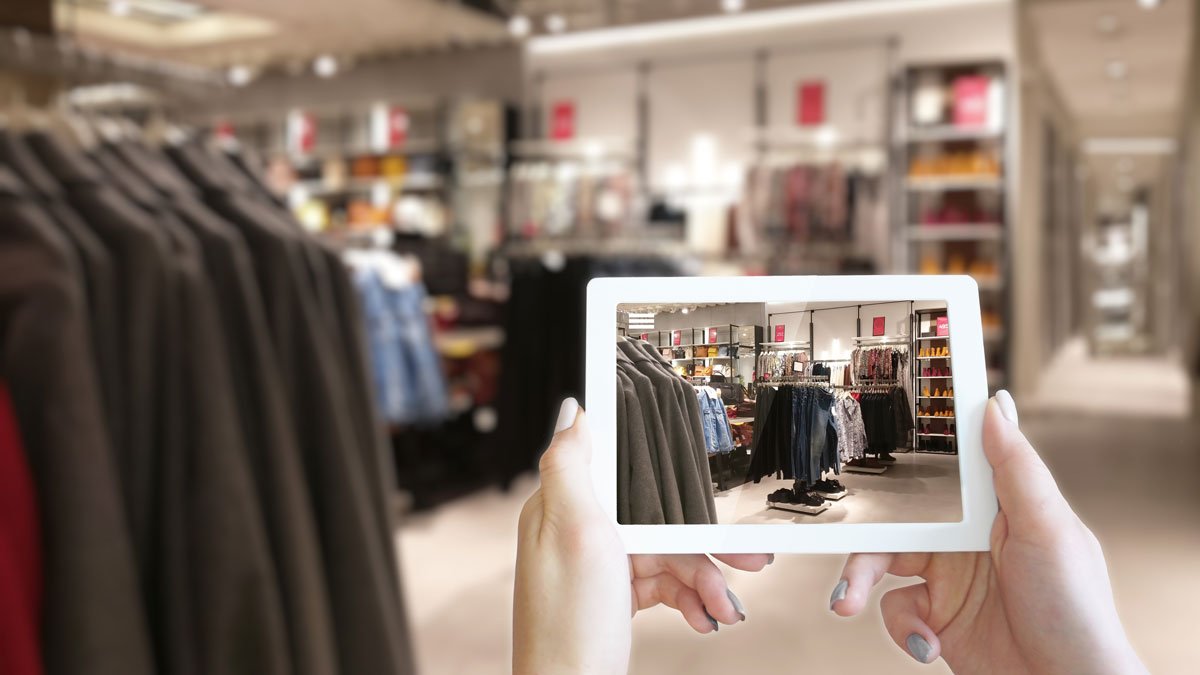As technology advances, the problem we have now, and continue to have in the future, such as Covid 19, and also that going out to shop is especially challenging, in addition to being inconvenient and time-consuming. Many ecommerce businesses are furious because they can’t demonstrate the precise thing they sell, and buyers sometimes lose trust in these businesses because they can’t feel or see the product they want. As a result, many consumers are angry and disappointed if their order does not reach their expectations and standards. That is one of the challenges of online shopping. However, with the help of today’s technologies, they are developing AUGMENTED REALITY, which will provide a realistic solution to customers by providing more detailed and complete information on the product without requiring them to leave their homes.
What Is Augmented Reality?
Augmented reality or AR is an experience that has been developed and improved so that we can experience real-world environments while simultaneously enhancing real-world objects with computer-generated perceptual information that can be viewed in sensory modalities. This system has three main features: the first is that it combines real and virtual worlds, the second is that it allows for real-time interactions, and the third is that it allows for 3D registration of objects.
How is Augmented Reality Different from Virtual Reality?
Augmented reality enhances your surroundings by layering digital components on a live view; it is most commonly used with a phone camera (less equipment required), so it is more likely to be easier to access and more interactive to use, whereas Virtual Reality replaces the real world with a virtual environment and requires a lot of equipment; it is a fully immersive experience.
Kinds of AR Applications
There are several types of augmented reality technology, each with slightly different characteristics. Here’s the different type of AR application:
Marker AR
Marker AR recognizes an item (the “marker”) when we need to know what the user is looking at.
Marker-less AR
Markerless AR does not require a specific item to activate it. You may position a virtual item wherever they like. The item may then be rotated and moved.
Location AR
These types of experiences link AR to a specific geolocated location. Location-based experiences are generally used outdoors, and provide contextual information about the surrounding environment.
Projection-based AR
A kind of augmented reality application that engages actively with real-world assets. These are designed to promote the application of various skills.
 How Ecommerce Businesses Are Using Augmented Reality?
How Ecommerce Businesses Are Using Augmented Reality?
Before making a purchase, e-commerce customers may utilize augmented reality to check out a product or experience a service in their own surroundings and on their own time. Ecommerce businesses may offer preview placement, which allows customers to see how a product will appear in their actual environment in real time. It can also include an interactive user manual to assist people learn how your product works.
Augmented Reality boosts growth
Some of the main challenges of ecommerce is presenting a sharper visual of the goods or a precise explanation, but AR provides hope not only to businesses but also to customers. It bridges the difference present in-store and online shopping by simplifying the process to portray products and allowing buyers a better knowledge and clearer image of the services they are purchasing. It decreases product returns, increases income, and welcomes new customers.
Ecommerce Statistics on Augmented Reality
Marketers are focusin on augmented reality’s growing popularity. Let’s look at some numbers to support this claim:
- It was proven and stated that global revenue, which peaked at $500 million in 2019, is estimated to rise to $1.4 billion by 2020.
- According to a research organization, advertising income might reach $8 billion when 2024 ends.
- As shown in a June 2020 poll of US businesses, 20% planned to invest in AR or VR for their company’s online store, up from 8% six months previously.
- As from 2020 of June, 35% of respondents in the United States indicated they have used AR apps to foresee furniture or automobile upgrades.
- According to eMarketer, more than 40 million individuals in the United States are using augmented reality a month by 2020. That equates to about 21% of users of social media platforms.
- Over 83 million individuals in the United States will use augmented reality on some variety of gadget each month, according to eMarketer, and this amount is projected to increase to 95 million by 2022.
Some types of products might be challenging to sell on ecommerce sites because it is impossible to predict how the items would seem in real life vs on a computer or device screen. That is why, particularly since the advent of social distance, augmented reality applications have grown in popularity. According to Google, 66% of people are interested in utilizing augmented reality technology to help them buy. Augmented reality assists in bringing ecommerce items to life with detailed information, allowing buyers to make informed purchasing decisions. And it improves the customer experience by enabling this visibility before customers commit to purchase. So, even if you are a business person or a buyer, now is the time to try augmented reality, which has a lot of benefits that can help you.
 How to Apply Augmented Reality in Your Online/ Digital Store
How to Apply Augmented Reality in Your Online/ Digital Store
If you’re convinced augmented reality could assist your business but don’t know how to take an initiative on your digital store, here are some measures that you can follow:
1. Clarify business goals.
You must know and understand your business goal, as well as the things you like your client experience to obtain. Before entering into the parts of the application, consider the agenda.
2. Determine which augmented reality technologies you want to utilize.
Once you’ve decided the things you like to do, you can begin to contemplate on things that you are going to need. For example, what kind of license, compatible devices, authorized operating systems, and capabilities would you choose?
3. Promote your product, development devices and tools
After all of your great efforts in developing the tools, you’ll definitely want to show them off to the rest of the world. You may share it to the world by making a promo vid, providing app instructions, and making your work accessible.
Conclusion
Concluding all of this, you can clearly see how important augmented reality is when it comes to creating a more accessible, realistic, and improved virtual experience in this highly digitized world. However, you need to make sure that you need the ins and outs of augmented reality for you to maximize its use. Ecommerce will surely reach new and greater heights once augmented reality technology seeps deeper into the mainstream market.




